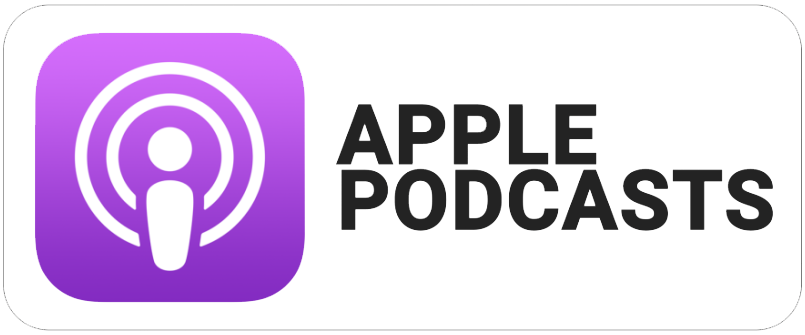Transcript
Welcome to BLaST the Airwaves with BLaST Intermediate Unit 17. Here at BLaST Intermediate Unit 17, we strive to transform lives and communities through educational services. On this podcast, we will provide you with educational solutions for all, no matter the learning environment. So teachers, administrators, caregivers, what are you waiting for?
What would happen if we started questioning, what if? What if we had a positive perspective on education? What if we flip the switch on education? What if we were the solution?
Hello listeners. We are excited to BLaST the Airwaves with you today and provide educational solutions for all. My name is Rebecca Gibboney and I am the Curriculum and Online Learning Specialist here at BLaST Intermediate Unit 17. I am thrilled to welcome you to this episode of BLaST the Airwaves. Today, we have the pleasure of speaking with Meg Ralston an Autistic Support Consultant here at BLaST Intermediate Unit 17. Meg, thank you so much for joining us today to discuss educational solutions for all. Specifically, we will be discussing how you build your teacher credibility with your students. Are you ready to BLaST the Airwaves?
I am absolutely ready. Awesome. So why don’t we get started by telling us a little bit about yourself? For example, what is your average day look like in the life of Meg?
Well, I started working with individuals with special needs over 25 years ago. And my first experience were working in group homes for adults with developmental disabilities. So from there, I started working with toddlers with autism in their homes and implementing ABA programming, which focused on learning behaviors such as academics and communication. And now I work as an autistic consultant for the IU.
Wonderful, that is awesome. Yeah, that’s awesome. 25 years. That’s impressive. Kudos to you.
I love it. I love it. I’ve never wanted to do anything different.
I love when we’re working with you, you are so passionate about what you do. And I’ve had a lot of time working with you this spring in our professional development professional offerings. I just loved your passion and enthusiasm.
So thank you. Thank you.
Yes.
Passion for these kids, you know?
Yeah. So why don’t we describe? describe for us what school looks like for you in this year of 2020? Do you go to homes? Is it remote? Is it hybrid? Are you in school districts? How does it look for you?
Well, Rebecca, it’s pretty much all time in the districts that I work with. I go to a different district every single day. So
Wow.
Yeah, so when I’m in the districts each day, I travel through their different buildings. So at this time, pretty much all the districts I work with are in session full time. There’s one district doing a hybrid. Most of the students I consult for are at school, just very few of the kids with autism are at home and remote learning. But there are some. So for students who are at school, it’s pretty much business as usual, with some adjustments as far as social distancing, and mask-wearing. So for the students who are doing remote learning, I still consult with their teachers each week in many of the same ways that I had before. Except we might team together doing some activities with the students on Zoom sessions. We also have teamed and done some Zoom sessions with parents who are supporting their kids at home and remote learning. And we really, really work together to create meaningful and productive lessons for the students who are doing remote learning to help them stay engaged.
Wow, that’s, that’s fantastic. I know, it’s been such a learning curve, not just for students, but for families and teachers because, you know, teaching you know, students, in general, is difficult remote learning, but if we talk about students with special needs and severe special needs, that can be really difficult. I’m going off script here a little bit, but how, how has that been for you? You know you say you’re jumping on zooms to educate parents. Are there any other tips you would give people like what are you doing?
I mean, honestly, my role with all this since you know the whole COVID started back in the Spring. I did a lot of kind of jumping on teacher Zooms and doing a little observation, I might like mute my video a little bit because I wouldn’t want the student to get overwhelmed with all the faces on the screen. And I would kind of do a little observation and then the teachers and I would have kind of a powwow afterward, about what went well with the session, what can we do to improve? What can we do to help the students stay engaged, and oftentimes even just stay at the table wherever the computer or laptop is at the time. So we would kind of meet and, and I would give them some pointers. And a lot of what we did, Rebecca was very similar to what we do at home to make learning fun and reinforcing and engaging for these guys. I would give them some suggestions as far as you know, the student works for maybe two minutes, you might even just start with two minutes for kiddo that has a hard time engaging with you during a Zoom session. And then directly to that two minutes, you might play a clip of a favorite video for a couple of minutes. And then you go back to what you were doing. And you might start off really short, and only expect maybe like a 15-minute session, or even a five-minute session that depends upon the kiddo. And you build up the time throughout. And then but you always want to be using like those same types of reinforcements that your students love via the Zoom session. And it’s really fun to kind of find things that can be reinforcing, during Zooms with students, you know, you might not be able to give them high fives, but you can find a way to give a high five over a Zoom session by putting your hand up in front of the screen, and then they do it too.
So that’s awesome.
Yeah, it’s it’s been, it’s actually been really fun to find resources and interesting ways to reinforce the students to help them stay engaged, as well, as you know, talking to parents to via Zooms. We don’t want this to be, you know, we want to be really supportive of the parents too, because, you know, they are supporting their students at home. And so we often would have some fun talks with parents.
Yeah, definitely, it takes like a tribe to help students right now become these virtual learners, if they’re in a remote setting. Yeah. So you know, on this podcast, we’ve been talking a lot lately about building teacher credibility, how well students feel that they can learn from you. And there are four parts to that. So if we talk about trust, so let’s start with trust. How do you build trust with your students?
Well, when I’m working, and since I’ve been working with individuals with autism, I focus really, really heavily on earning student’s trust by creating environments that are consistent, that are predictable, and are relaxing for students with autism. When I first meet students, I start every single interaction with just being present with the student, and letting them take the lead in our interaction, and allow them to guide how our interactions will go. I don’t really require a lot, right at first, you know. I want to be present with the student. And when I consult, and my and the teachers I work with, have a new student with autism, I tell them to do the same, you know, just take time to relax and help the student to relax. And you’ll get to all that learning and test stuff, you know, soon, but I like to, I just like to build trust just by being present with these guys.
Wonderful, wonderful. And, I mean, obviously, you know, I see your passion, just from a zoom interaction with you in the spring, but how do you show your students and your families even to your passion for teaching and your passion with dealing with students with autism?
So I show students that I am fully engaged with them? Well, while they’re learning, and I might do this with lots of reinforcement while they’re working with me, such as genuine verbal praise, and other types of reinforcements that I know the student enjoys. You know, we want the students to know that we care about their learning and, and that they know that we’re there to support them throughout their learning, and celebrating every accomplishment no matter how big or small they are.
That’s fantastic. I, I really think that celebration, big or small, is really important for colleagues, for families, for students. So I’m really glad to hear that you still are celebrating those successes.
Absolutely.
You mentioned a little bit earlier about some consistent routines that you have you like to be consistent in practice, you know, to build the trust. Can you explain maybe one of those routines that you practice?
Okay, so sure. So, um, depending upon each student, you know, their needs, their routines, they’ll look really different for each student, obviously. Rapport building and trust-building activities such as we’ve kind of discussed with already are really, really important to embedding in daily routines when working with any student, but especially our students with autism. I always encourage them to like teachers to create a predictable and consistent classroom routine in their classroom, which will help students with autism learn independently. And we can do this by creating visual schedules for the kids, kind of mapping out their day, letting them see what it’s gonna look like, you know, so it’s really predictable for them Rebecca. Because, you know, No, nobody likes unpredictability.
Right. And right now, everything’s on predictable, right?
Oh, yeah, it’s so unpredictable. And, you know, all these new routines. At school, we’ve done a lot with social stories with the kids with mask-wearing, we’ve done a lot of practicing mask-wearing with kids, we did that even before school started. So there’s, there’s lots of things that you can do, to practice routines with, with the students just to help them have a real predictable day.
Right? And it seems like just with the trust, building, the relationships that you build your students feel they can relate to you. So, you know, we like to have the questions from the field. So the biggest question we’re getting based off of this teacher credibility is, what has been the biggest adjustment for you during these times?
Well, I enjoy, I really, really enjoy being with the teachers and being with the kids working face to face with them. So last Spring was very challenging. And this can be especially challenging when you’re doing consulting because you need to then move to Zoom sessions and other online ways of communicating. And for me, during this time, interactions that I’ve had with people can be really possibly similar to experiences that students with autism go through when they’re interacting with other people. Wearing masks or engaging in interactions just online, it makes it really, really challenging to get the full experience of how we would typically interact with other people. For example, we can’t read people’s nonverbals as well, because of their faces covered by a mask. So I found that just that connection, that real, genuine, personable connection with people is the biggest adjustment.
Yeah, and you bring up a great point about that and empathizing with your students with autism as well. How have you found that you’ve made that shift and, and adjusted as best as you can during the remote setting?
Well, um, you know, with the teacher credibility, which, kind of has been challenged through these times, I’ve worked with really excellent teachers, that rose to the occasion and, and really, and then some, they really have done an outstanding job in every single one of the districts, I work in. Shifting to remote learning, and now transitioning back into school, I’ve made, I’ve really made the effort to understand more about what this can be like for not only students, but for the teachers that I consult with, too. Because I think it’s about everybody, you know, that’s been involved in this. So during remote sessions, I’ve researched resources to not only support student learning but also resources for teachers to use for themselves as well. I have done a lot of that for teachers. You know, like looking up some good resources, they can use that they have remote learners, as well, as you know, just like I said earlier, social stories or visuals to help support themselves and the learners.
And that is another fantastic point because I talk with educators that I’m working with too, in our role as a curriculum specialist here, not just as teacher credibility we’re working towards, but even our credibility as consultants as specialists is challenged too. So it’s that building your credibility up 100% is a huge focus for a lot of us leaders and educators right now.
Absolutely. Absolutely.
Wonderful. So now it’s time for our favorite part, my favorite part especially our blast five. I’m going to blast you with five rapid questions for you to just quickly answer so you don’t really need to elaborate, but these can be professional or personal. We’d like to have a little personal touch too with our listeners hear. So your favorite app or website right now?
My favorite app site or app site website is Amazon.
Oh, it’s almost Prime Day. I feel like right?
Mm hmm. Sorry. See, then I digress. All right. Your favorite, favorite strategy?
My favorite strategy is the “I do, we do, you do strategy” Mm hmm.Yes. And your favorite read?
Odd Thomas Series by Dean Koontz. It’s an awesome series if nobody’s read that one yet.
Yeah, you’ll have to share that with me. So I can put it in the show notes for our listeners.
Favorite self-care activity?Really walking? Spending time with my pets that I have. As well as working with the rescue stray and feral cats that I do around the area where I live.
Oh, that’s awesome. I didn’t know that about you. That’s great. And this is a new one that we haven’t asked anyone yet. But your favorite quote?
Oh my gosh, my favorite quote is that Well, absolutely anything by Winnie the Pooh. But um, my favorite quote from them is Christopher Robin, I think said it. “You’re braver than you believe stronger than you seem and smarter than you think”.
Wow. Yes, that is definitely something that we need to hear right now as educators. So Meg, can you say it one more time for us?
Absolutely. “You are braver than you believe, stronger than you seem, and smarter than you think”.
So as educators, we’ve got this all together. That’s great. So, Meg, this has been a blast hanging out with you. Again, thank you for taking some time today to blast the airwaves with us and our listeners. It’s been a pleasure to have you on the podcast. Take care, and we will definitely be talking soon.
Awesome. Thank you so much. It’s been a pleasure to be here.
We would like to thank you for blasting the airwaves with us today. If you like the show, please subscribe or leave a review. If you want to know more. Check out www.iu seventeen.org for further resources and show notes. As always, we want to thank you for what you do every single day. Remember, keep shining. We’ll be back next episode to provide you another educational solution for all as we continue to transform lives and communities through educational services.
Additional/Suggested resources mentioned in the episode:
Odd Thomas Series by Dean Koontz
BLaST Intermediate Unit 17 – www.iu17.org
Professional Learning Opportunities at BLaST IU 17 – https://www.iu17.org/professional-learning/



